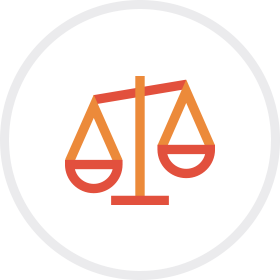影響脊髓性肌肉萎縮症病童營養攝取的常見問題
說明 |
孩童如何受其影響 |
|
嗆到1 |
說明
|
孩童如何受其影響
|
便祕 |
說明
|
孩童如何受其影響
|
吞嚥困難 |
說明
|
孩童如何受其影響
|
餵食問題 |
說明
|
孩童如何受其影響
|
胃腸道問題 |
說明
|
孩童如何受其影響
|
胃食道逆流疾病(GERD) |
說明
|
孩童如何受其影響
|
肥胖/營養過剩 |
說明
|
孩童如何受其影響
|
營養不良 |
說明
|
孩童如何受其影響
|
對於脊髓性肌肉萎縮症病童,當有熱量攝取不足或餵食安全性考量時,可考慮使用餵食管1,2
潛在益處 |
考量 |
|
鼻胃管 |
潛在益處
|
考量
|
胃造廔口管
|
潛在益處
|
考量
|
References
1. Wang CH, Finkel RS, Bertini ES, et al; and Participants of the International Conference on SMA Standard of Care. Consensus statement for standard of care in spinal muscular atrophy. J Child Neurol. 2007;22(8):1027-1049.2. Cure SMA. Tube feeding and SMA: recommendations and practices. http://www.curesma.org/documents/support--care-documents/2015-conference-tube-feeding.pdf. Published June 20, 2015. Accessed April 25, 2016.3.Birnkrant DJ, Pope JF, Martin JE, et al. Treatment of type I spinal muscular atrophy with noninvasive ventilation and gastrostomy feeding. Ped Neurol. 1998;18(5):407-410.4.Iannaccone ST. Modern management of spinal muscular atrophy. J Child Neurol. 2007;22(8):974-978.5.Nutrition basics: fostering health and growth for spinal muscular atrophy [patient booklet]. http://www.curesma.org/documents/support--care-documents/nutrition-basics.pdf. Elk Grove Village; IL: Cure SMA; 2011. Accessed August 19, 2016.6.Messina S, Pane M, De Rose P, et al. Feeding problems and malnutrition in spinal muscular atrophy type II. Neuromuscul Disord. 2008;18(5):389-393.7.Cha TH, Oh DW, Shim JH. Noninvasive treatment strategy for swallowing problems related to prolonged nonoral feeding in spinal muscular atrophy. Dysphagia. 2010;25(3):261-264.8.Darras BT, Royden Jones H Jr, Ryan MM, De Vivo DC, eds. Neuromuscular Disorders of Infancy, Childhood, and Adolescence: A Clinician’s Approach. 2nd ed. London, UK: Elsevier; 2015.9.Yang JH, Kasat NS, Suh SW, Kim SY. Improvement in reflux gastroesophagitis in a patient with spinal muscular atrophy after surgical correction of kyphoscoliosis. Clin Orthop Relat Res. 2011;469(12):3501-3505.10.Sproule DM, Montes J, Dunaway S, et al. Adiposity is increased among high-functioning, non-ambulatory patients with spinal muscular atrophy. Neuromuscul Disord. 2010;20:448-452.11.Sproule DM, Montes J, Montgomery M, et al. Increased fat mass and high incidence of overweight despite low body mass index in patients with spinal muscular atrophy. Neuromuscul Disord. 2009;19(6):391-396.12.Bladen CL, Thompson R, Jackson JM, et al. Mapping the differences in care for 5,000 spinal muscular atrophy patients, a survey of 24 national registries in North America, Australasia and Europe. J Neurol. 2014;261(1):152-163.

SMA的臨床表現具個體差異,常需要涉及多領域的綜合醫療照護。1